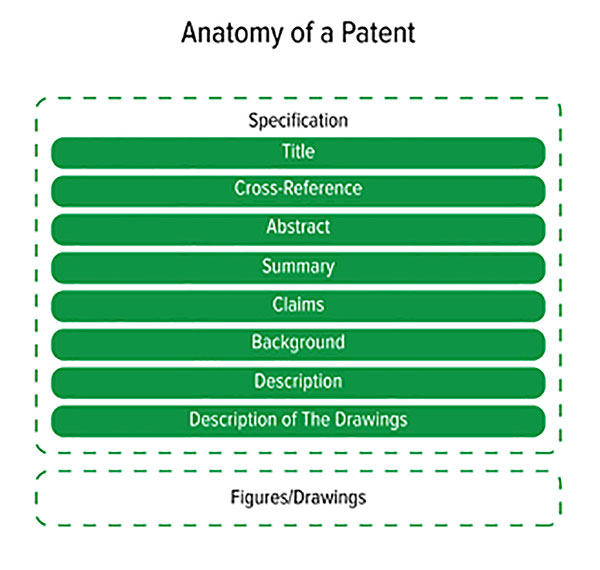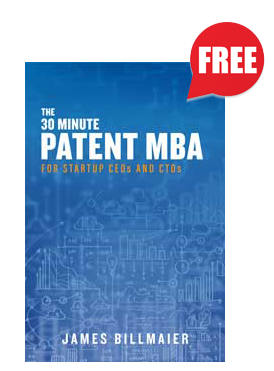This is #3 in our series of chapter excerpts from the book The 30 Minute Patent MBA by Jim Billmaier. Want to get the full ebook for free? Grab it here.
What exactly is a patent?
A patent is a 20-year government-granted monopoly for an invention. It gives your company a competitive advantage in the marketplace.
In the United States, a patent (from the filing date of the non-provisional application) is a 20-year government-granted monopoly for an invention, which generally speaking is a product or a process that provides, a new way of doing something or offers a new technical solution to a problem. One very important distinction that many people do not understand is that a patent does not directly give your company the right to ship your product. Rather, a patent potentially allows you to stop someone else from shipping their product. If you have evidence that another company, without your agreement, is making, using, or selling your invention in the same country that awarded your patent, you can then ask the courts to stop it from doing so.
The U.S. is now a “First-to-File” nation, meaning that the right to the patent for a given invention belongs to the first person to file a patent application for said invention. A First-to-File system increases the urgency with which inventors should act upon protecting their intellectual property.
As a result of this urgency, it’s often wise for businesses to file provisional patent applications prior to converting them to non-provisional patents.
A few reasons why this is a smart move:
• Provisional patent applications are lower cost than non-provisional applications
• Provisional patent applications are faster/easier to produce/file than non-provisional applications
• Provisional patent applications buy you 12 months of “patent pending” protection status, during which you can hone and perfect your idea before deciding to pursue a more expensive, time-consuming non-provisional patent application. (Before that 12 month deadline, you must either convert the provisional application into a non-provisional patent application, re-file the provisional application which resets the priority date, or abandon the idea).
What is in a patent application document?
A patent is constructed in three sections: the claims, the figures, and the description. The most important of the three sections is the claims. We say this for two reasons:
First, the claims comprise the legal description of the invention and therefore dictate the actual boundaries of your intellectual property ownership. The rest of the patent is simply there to support the claims.
Second, most CEOs read a part of a patent description, such as the summary or abstract, and believe they understand the legally protected invention. Most often they do not. Summaries and abstracts can sound really good (much better than the inventive claims warrant), when in reality the summary and abstract may not accurately convey what is protected.

There are two types of patents:
• Utility patents are the most common type of patent filed. Utility patents protect functional aspects of an invention.
• Design patents protect the appearance or ornamental design of an invention.
Beyond patents, there are other forms of intellectual property that are worth briefly mentioning:
• A trade secret is information that gives a business a commercial advantage in the marketplace and is the subject of reasonable efforts to keep it a secret. Unlike a patent, a trade secret requires no registration and has no expiration date. (One of the world’s most famous trade secrets is the formula for making Coca-Cola, which has remained a tightly held secret for more than 125 years.) To qualify as a trade secret, the invention must conform to three rules: (1) it cannot be generally known to the public; (2) it must have economic value derived from being kept secret; and (3) the company must make efforts to maintain the secrecy of the invention. The most straightforward way to create a trade secret is to draft a patent application but not file it with the USPTO. Instead, mark the application “Confidential/Trade Secret” and then protect and monitor access to it. Just as your employees and contractors sign IP assignment rights transfer agreements for relevant inventions, those who have access to trade secrets should acknowledge the importance and confidentiality of the company’s trade secrets.
• A copyright grants the creator of an original work exclusive rights for its use and distribution for a limited amount of time.
• A trademark is a distinguishable design that distinguishes products or services of a particular company from others. Unlike other forms of IP, trademark rights are typically derived from the use of a specific design.
This has been an excerpt from the book The 30 Minute Patent MBA by Jim Billmaier. Used by permission of the author. Want to get the full ebook for free? Grab it here.





